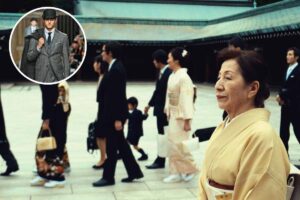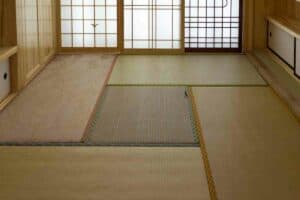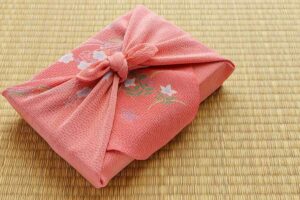There are seven fundamental principles governing the design of a Japanese Zen garden.
They include:
- Asymmetry (Fukinsei) and Odd-numbered components
- Naturalness (Shizen)
- Simplicity (Kanso)
- Tranquility (Seijaku)
- Elegance (Shibumi)
- Surprise (Datsuzoku)
- Allusion (Yugen)
Under these garden design principles, different elements are combined to create a beautiful simple garden that captures the essence of the greater natural world while creating a calm environment to aid in meditation.
The basic structure of a Zen garden features natural elements such as rocks, gravel or sand, water, or plants, which have great symbolic significance in the garden.
Also Good Idea – Man-made features like pathways and bridges may also be incorporated in a Zen garden design.
Table of Contents
Basic Principles Used In Designing A Zen Garden Explained
Asymmetry (Fukinsei) and odd-numbered components
Asymmetry is seen as a technique of managing the balance in composition in Zen aesthetics, precisely because imperfection is a component of life.
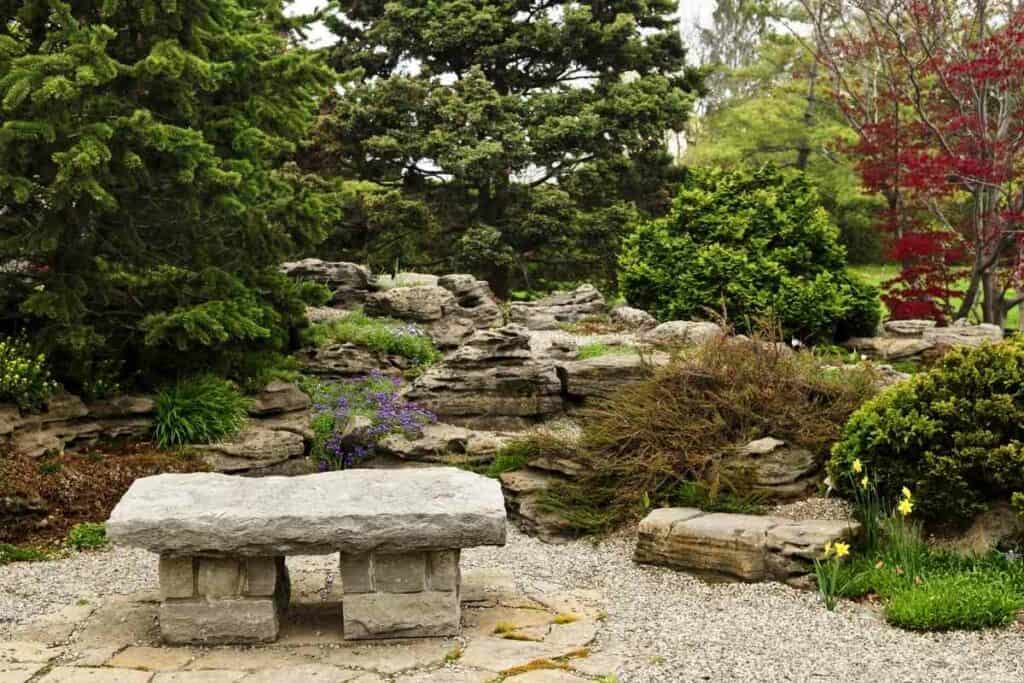
This is due to Taoist and Zen influences on Eastern thought.
Furthermore, odd-numbered components (usually 3 and 5) more accurately resemble the unpredictability observed in nature.
As a Result – The design follows a natural sequence, with odd-numbered plants, ornamental features, and asymmetrical positioning of things.
This contrast is said to provide energy and a sense of movement amongst garden components, bringing harmony.
Naturalness (Shizen)
In the Japanese Zen garden, Shizen manifests itself as an apparent naturalness or a serendipitous response to the quirks and vicissitudes of nature.
It is exemplified by the appearance of simplicity and the concept of spontaneity in landscaping. Nothing is forced or imposed in the creation of the garden.
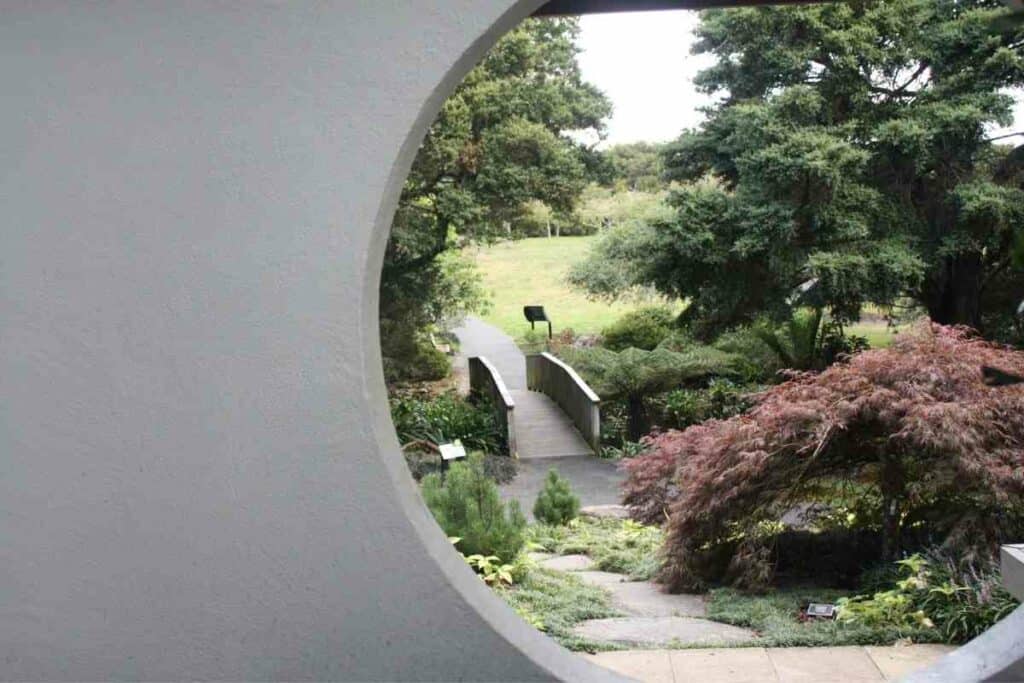
The garden design works with the natural terrain rather than changing or adding to what is already there. Any modifications that are made are minor.
The gardener does not strive to impose their thoughts or plans on the garden.
Instead: They collaborate with nature to provide harmony and unity to the natural world. Plants, in fact, are rarely employed in a Japanese Zen garden. Instead, you deal with the plants that are already there.
Simplicity (Kanso)
Another concept of Japanese Zen gardening is kanso, which means simplicity.
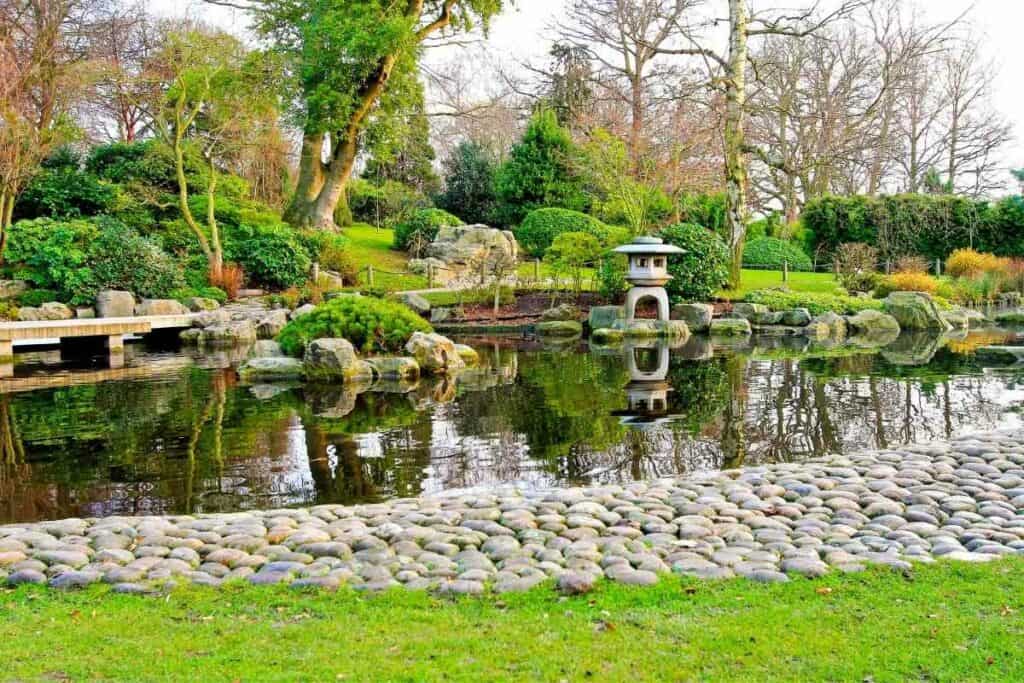
Simplicity is of the utmost importance for designing a Zen garden.
The expression (including landscaping) must be straightforward and natural, with a garden landscape derived from clarity and purity.
In Other Words – The beauty and utility of the Zen garden need not be overstated, overly decorative, or fanciful.
The more you can leave out, the simpler it will be and the more successful it will become a Zen garden.
Kanso’s arrangement lends a sense of serenity, tranquility, and silence to the garden space, allowing you to feel at ease in the place.
See our selection of mini zen desktop gardens here
Tranquility (Seijaku)
Stillness is unquestionably Zen’s most important concept.
This concept underscores the tranquility and quiet that a well-designed Japanese Zen garden produces, from silent meditation to arriving at the “still point” or enlightenment.
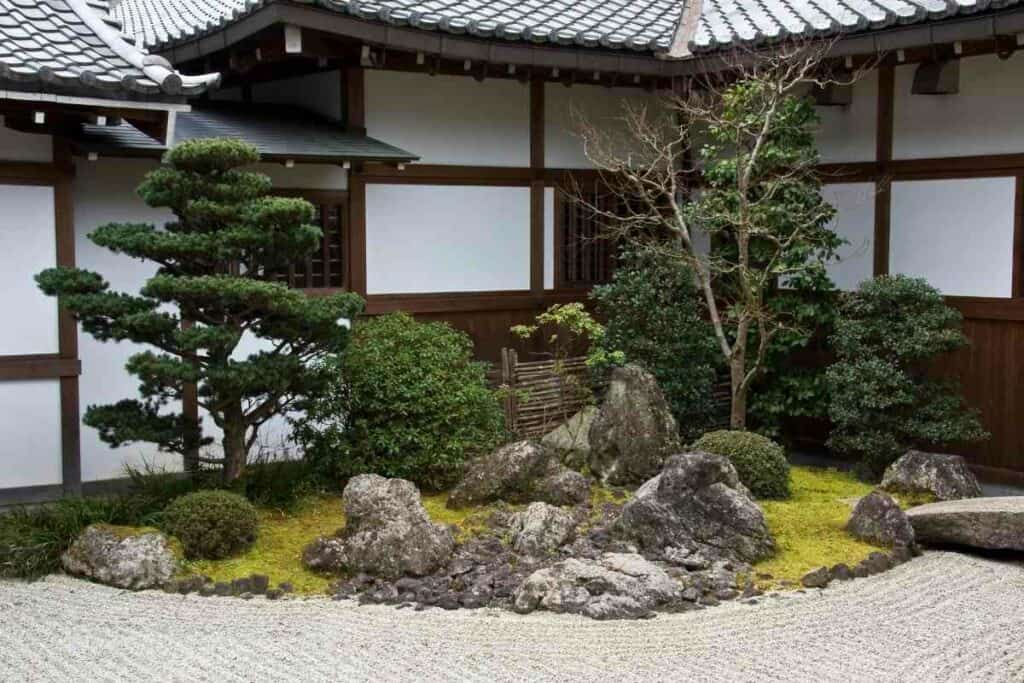
Noise and disruption are the opposites of the feelings described by Seijaku.
An active silence is pursued, an energized, alert and perceptive calm. This condition is the purpose of the garden, which should always convey the energy of active silence.
The fundamental secret to this art is bringing distinct landscape aspects (that also reflect Fukinsei or imbalance) into harmony to establish equilibrium.
Elegance (Shibumi)
Shibumi is a central idea in the Zen perspective of life, beauty, and the natural world.
Shibumi is untranslatable and is characterized as a sensation rather than a tangible.
Two conflicting facts can coexist, as in “imperfect perfection,” “simple complexity,” or “everything and nothing.”
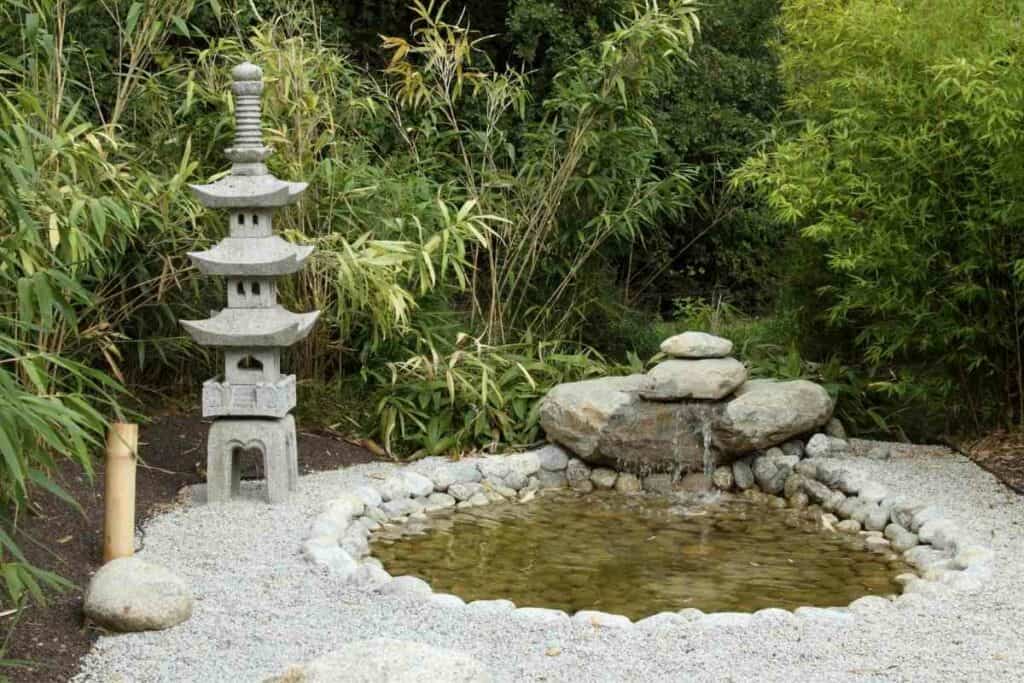
It refers to an almost concealed beauty, as well as a basic, restricted use of materials, color, or aspects to best reflect the craftsman’s or artist’s objective.
It frequently integrates wabi-sabi as a design element and emphasizes that actual harmony resides midway between two extremes.
In Japanese thinking, they are frequently connected notions.
Wabi-sabi- Is a combination of two old terms with overlapping definitions, may reflect the Buddhist perspective on life and art: both are beautiful not because they are flawless and eternal, but because they are flawed and transient.
Surprise (Datsuzoku)
The Japanese Zen garden is filled with the sensation of a fantasy realm, a transcending of our plane of life.
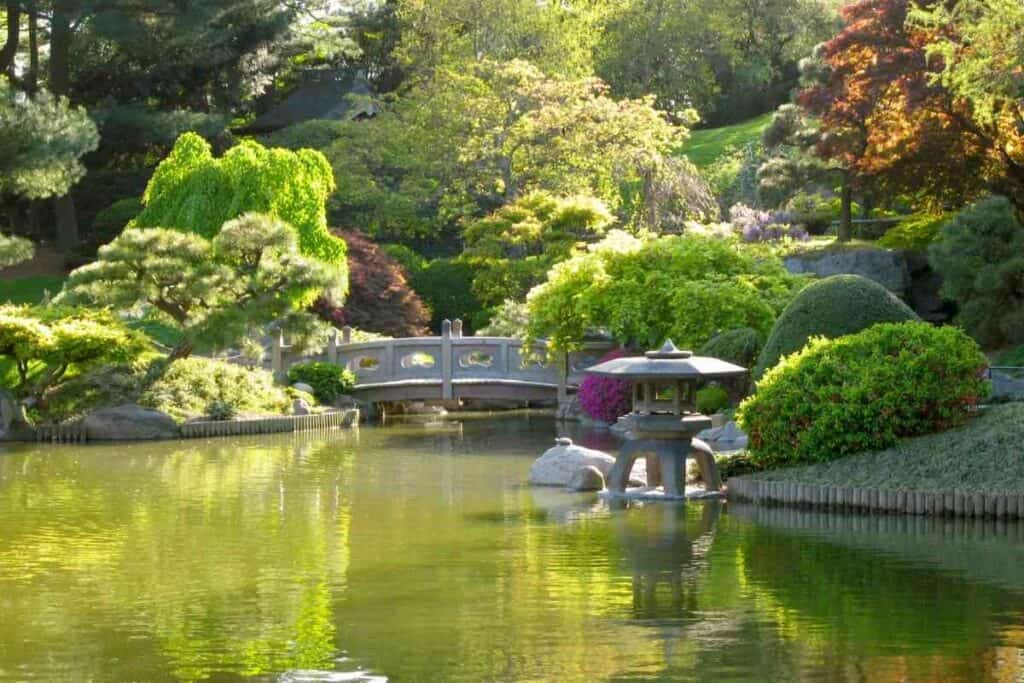
The principle begins with a sense of surprise when something out of the norm occurs.
This feeling of intrigue is achieved by dividing the garden into smaller, individual spaces, each with its own character.
So there’s mystery and surprise.
Allusion (Yugen)
Yugen is an essential concept in designing a Zen garden.
It denotes that the invisible is more important compared to the obvious.

The most common Yugen feature in the garden is Miegakure, or “hide and reveal,” in which just a small portion of the garden is seen via a window.
Or a bend in the route gives only a hazy sense of what’s around the corner. Another example of Yugen’s work is the dance of shadows in the garden (“darkness”).
Zen Garden Elements
Whether traditional or contemporary design, every Zen garden contains:
- rocks
- gravel
- or sand elements
Modern Zen gardens may incorporate features like plants, bridges, and water.
Each garden element has its meaning and importance.
Natural Elements
Rocks
Rocks are essential Zen gardening elements.
They are often pale or dark gray and have a worn look.
In Zen Gardens – Rocks are spread on a flat surface to emulate the intricacies of nature, that is, islands, mountains, or even animals (when grouped in the shape of an animal).
Apart from animal forms, stones can be molded into different shapes to represent water, fire, air, earth, and metal.
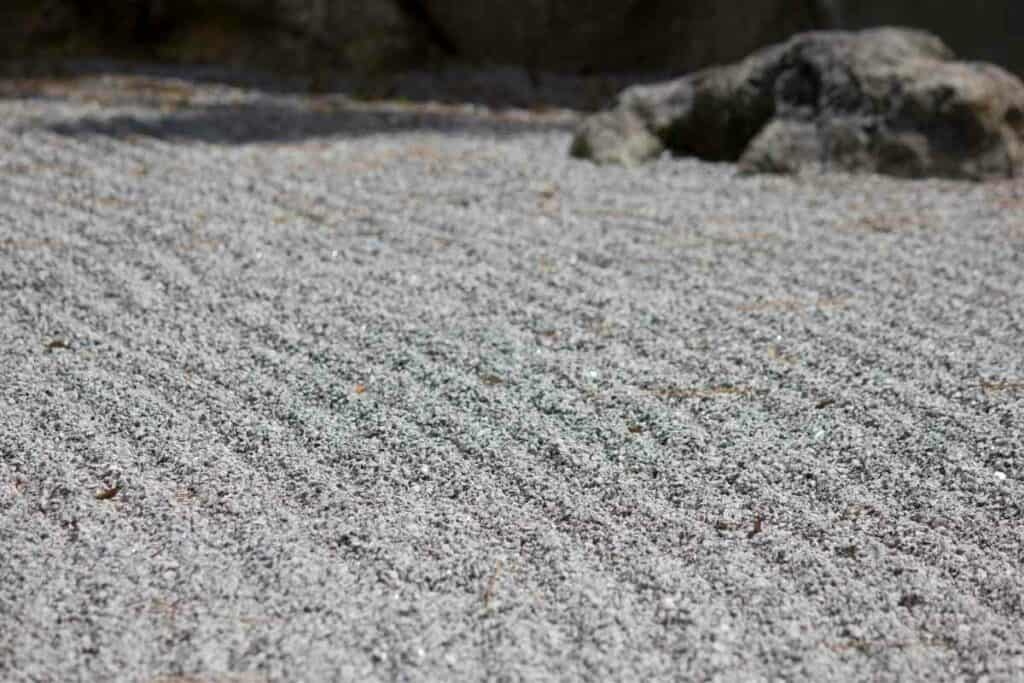
Here are the most common meanings:
- Broad and flat rocks characterize water
- Arched or branch-shaped stones symbolize fire
- Reclining stones represent earth to depict a relaxation or tranquil appearance
- Vertical rocks symbolize metal
- Upright stones represent trees and woods
The animals formed with rocks represent longevity.
Rocks play a prominent role in meditation as they bring a sense of calm and tranquility to your yard and garden.
They also signify the human aspiration for eternity and natural components that endure.
Gravel or Sand (Suna)
Sand or gravel form an integral part of a Zen garden.
While you can use sand, grit is more durable and less difficult to maintain. Use finely crushed grit, little smooth pebbles, or pea gravel.
In a Zen garden, stretch the grit on a flat area.
These particles should be angular rather than circular so that you may rake them into patterns.
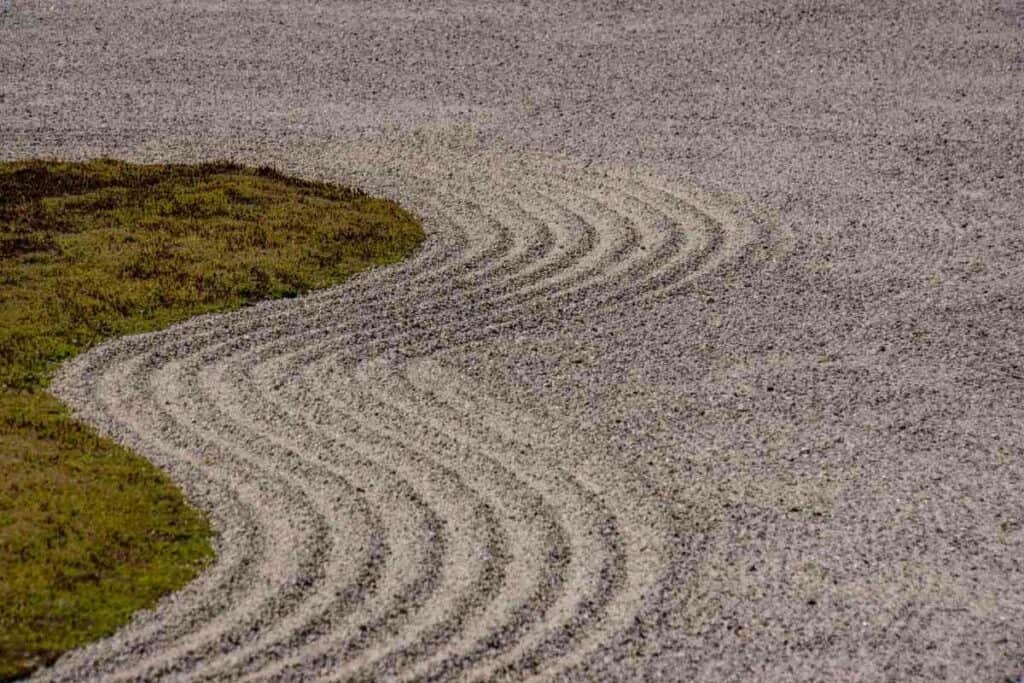
Use a fine-toothed metal rake to smooth the grit and a wide-toothed metal rake to design the patterns.
Gravel patterns represent a season or convey a specific mood: gravel or sand mimic rivers, seas, or streams.
Wavy raking lines reminiscence waves or currents of a meandering stream and lines surrounding more giant pebbles represent water ripples.
In contrast, a straight line suggests serenity or a snowy winter scene.
Water (Mizu)
Usually, a conventional garden doesn’t use water, but modern designs may incorporate it.
In traditional Zen gardens, it is designed using rocks, sand, or moss.
Contemporary Zen gardens can have:
- streams
- ponds
- and even waterfalls
The water utilized in the modern gardens represents refreshment and purification. It is a fantastic tool for encouraging introspection and meditation.
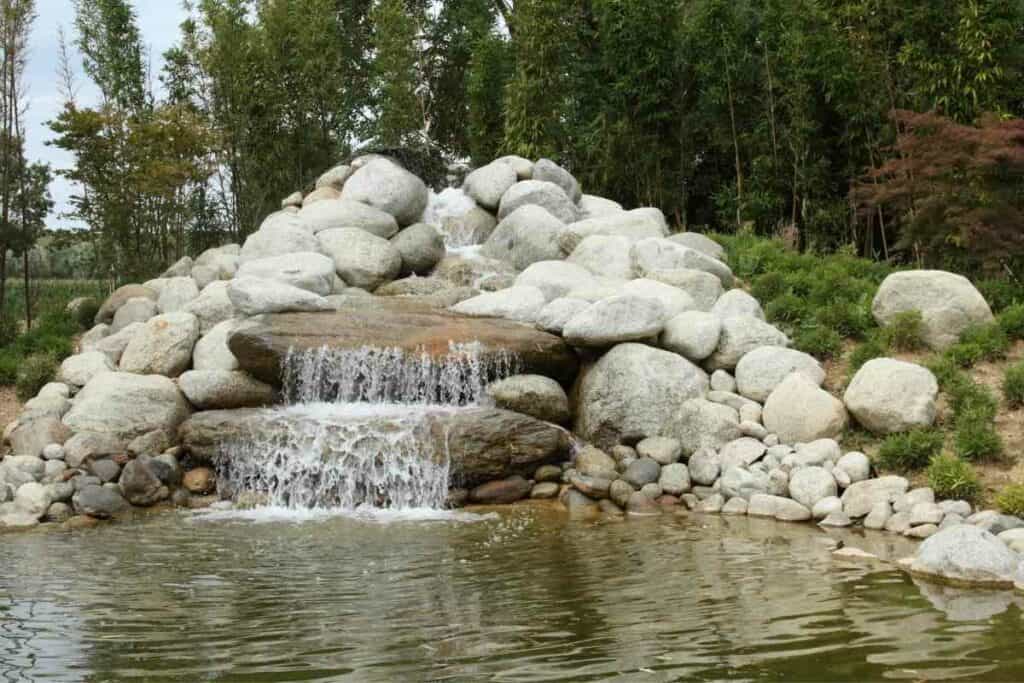
The sound of running water may create a more relaxing environment suited to meditation.
Watching the water run and listening to its gentle trickle and splash helps relax you while also softening the rocks in your Japanese rock garden.
Plants (Ki and Hana)
Zen gardens typically incorporate little vegetation.
Plants employed are low and creeping to complement rather than overpower the hardscaping.

They are used with a symbolic representation to bring these gardens’ obvious and profound beauty.
The ideal plants for a Zen garden include:
- mosses
- lichen
- pine
- bamboo
- bonsai
- ferns
- conifers
- azalea
- sedges
- topiaries
- Japanese maples
The quantity of light in your room will influence whether you should grow sun or shade plants.
Plants are commonly employed to portray nature’s look, link people to nature, and assist in the process of relaxing.
The plant’s green shade evokes feelings of calmness, harmony, and serenity.
Quick Tip: When planning the space, use fake plants instead of real ones to create a genuinely low-maintenance Zen garden.
Artificial Elements
A Zen garden may also include man-built elements such as walkways, bridges, and borrowed landscapes constructed of rock or stone.
They are used as a focal point to aid meditation.
Bridges (Hashi)
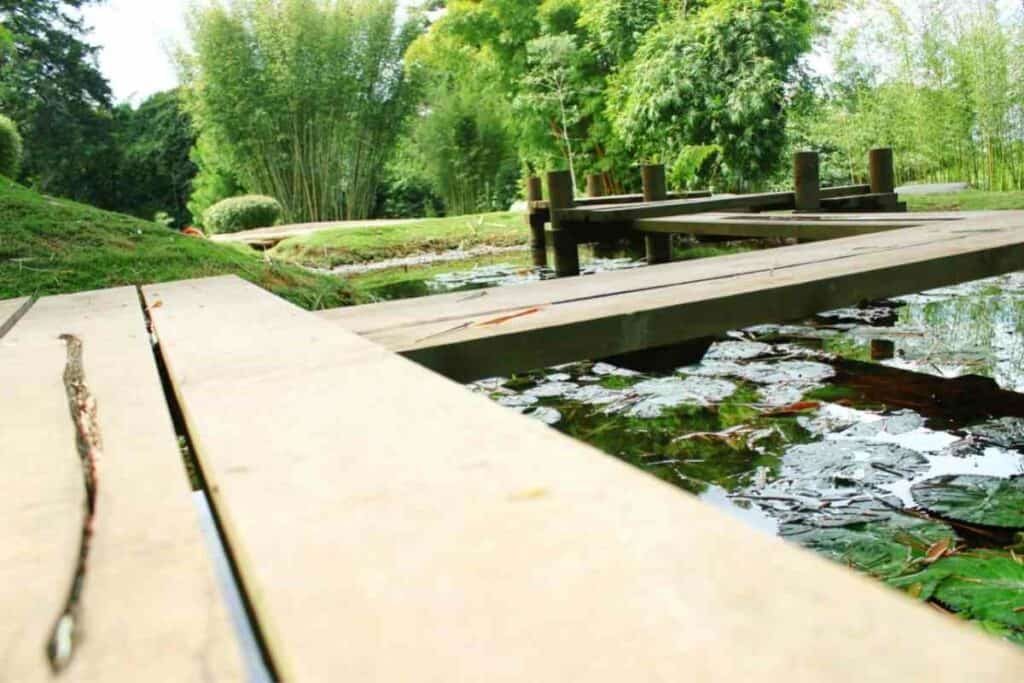
Bridges can be included in Zen gardens to indicate a person’s transition from the earthly world to the afterlife.
It represents a journey towards enlightenment.
They create transformational feelings of a person being cleansed from worldly burdens during the journey.
Bridges can be built of stone or wood molded into an arch shape that people can stroll across.
Pathway
One can add a pathway in a Zen garden to help access the Zen park for maintenance and lead visitors to the garden’s best views.
You can construct it with stepping stones, crushed gravel, or sand.
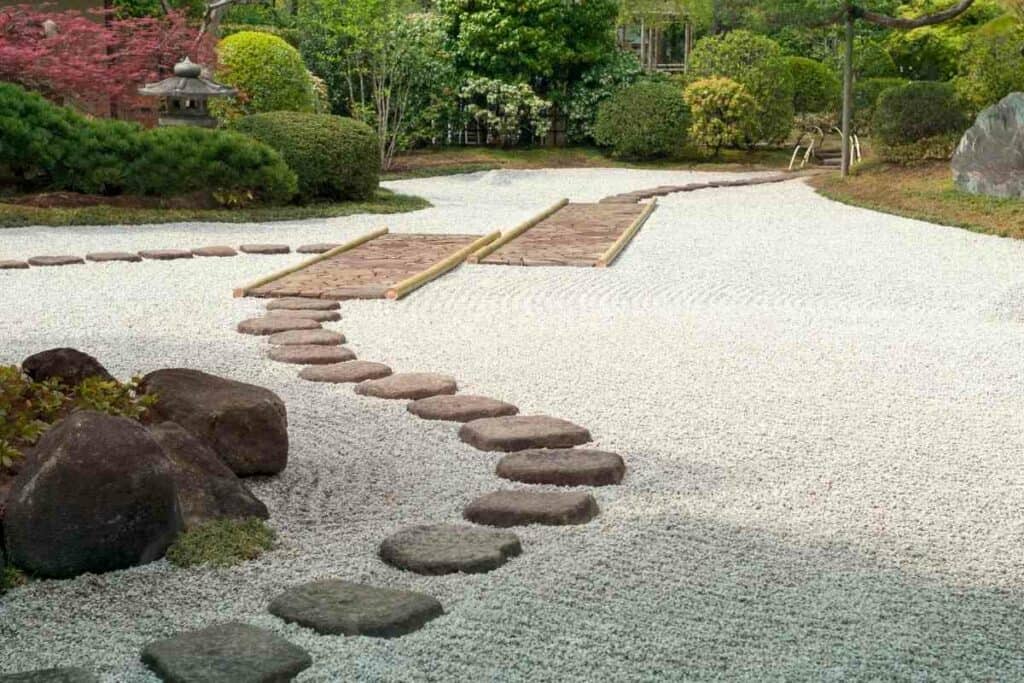
Utilize darker colored stepping stones to contrast with the surrounding gravel and more enormous rocks.
Meandering paths are mainly constructed over straight pathways because they can segregate different areas for individual contemplation.
Borrowed Scenery (Shakkei)
Outdoor Zen gardens can be blended into surrounding scenery such as skyscrapers and existent landscapes such as forests, hills, or valleys.
Borrowed scenery enhances the garden look ancreateste an interconnected natural existence.
Final Thoughts
Zen gardens may be a beneficial addition to your home or workspace.
They are aesthetic and promote a meditational and relaxing environment to slow down and enjoy the beauty in the little things.
Both traditional and contemporary Zen garden designs don’t need a lot of room. A tabletop garden packed with sand and pebbles might be just as helpful as a park.
Zen gardens are also eco-friendly as they use minimal natural resources readily available.
So, with the above Zen gardening principles coupled up with the essential elements, you can now create your Zen garden.
Also Helpful
- Best Japanese Knives Top Picks for Every Kitchen
- Japan’s Bold New Trend: Dressing Like a British Gentleman (or at Least Trying)
- 7 Best Japanese Sunscreen Products You Can Buy Online
- 5 Best Japanese Makeup Brushes for a Flawless Finish
- 7 Benefits Of Tatami Mats You Should Know
- The Best Furoshiki Wrapping Cloths: Inspiration, Ideas & Cloths You Can Buy


